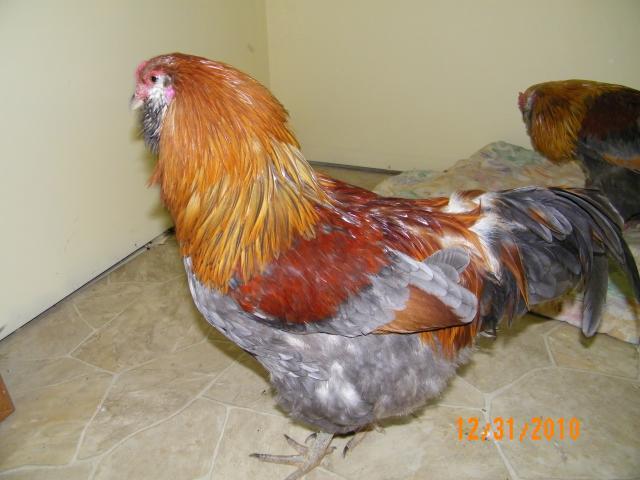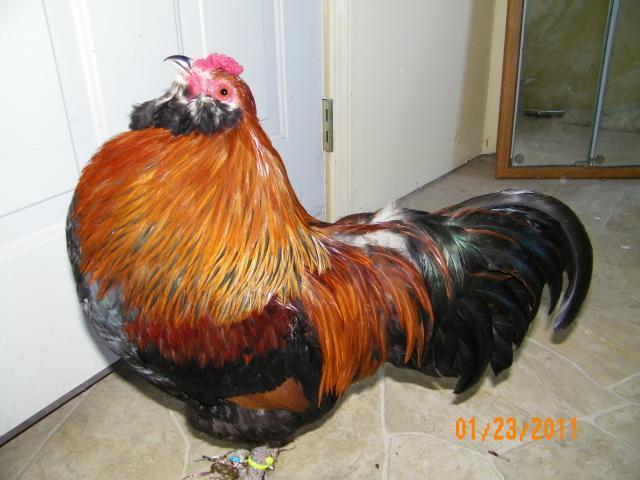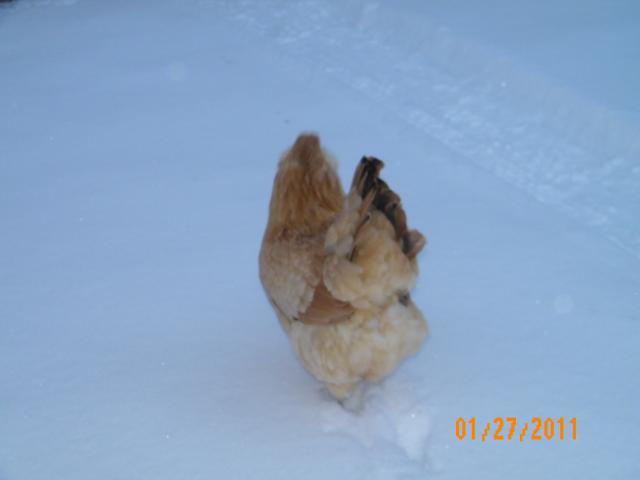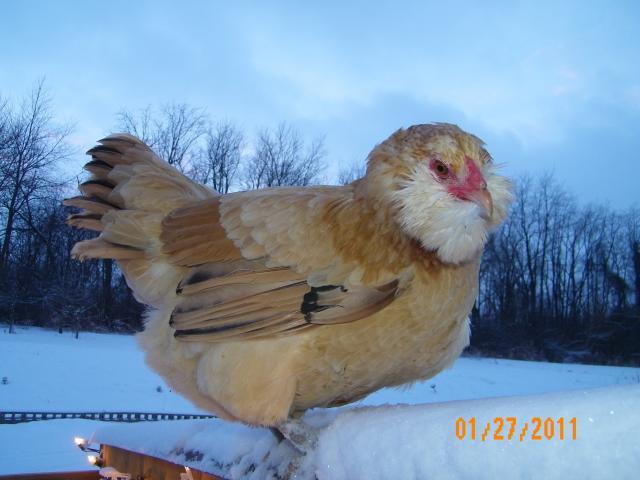Quote:
Depends on how cold the day is...not always. Like, today, for instance, I need to go out there and turn it off...but I keep finding things to do inside.

Let me see if I can say this right....in horses you added a couple of hours to the naturally occurring daylight hours by turning on barn lights on a timer either a couple hours before dawn or a couple of hours after, or you divided it between both. The hypothalamus or pituitary or something inside detects the number of daylight hours and kicks the breeding season into full swing by allowing the animal to produce the natural hormones present in what would normally be a season of good fertility so that the babies are born when plenty of forage is present to support the nutritional requirements of a lactating mare. I'm sure it is not that much different in chickens.
It all boils down to this... you want to trick the bird's little brain into thinking it is already late spring/summer. I don't know how long they have to be exposed to longer daylight hours to achieve a hormonal response, but one week of turning on lights probably isn't going to cut it. Turning on lights one hour one day, three the next, and none the next, probably isn't going to be a reliable way to get it done, either. That's why we used timers for the horses. For horses, the amount of light suitable to generate a response was whatever watt bulb made your stall bright enough to read normal newsprint by. It doesn't take a 100w bulb to illuminate a chicken locked up in a 2x3' area, hence the very effective idea of using led rope lights (and much cheaper, too!).
While we're on this topic, another thing we did in horses was increase the nutritional plane of the non-pregnant mares as breeding season approached (along with the lights on timers). Think about this for a moment. Let's say you live in IL, just for an example. There are probably not many blades of grass around in mid-January for chickens to forage on. There are probably even fewer bugs, because, they aren't breeding right now, either, and the ones present are going down deeper into the ground to escape cold (think worms). So the chickens don't get the same nutritional density when they forage in Dec/Jan as they would in March or April. You can duplicate the change by adding greens (buy some collards/turnips/spinich/leafy lettuces/shredded carrot--whatever you can get your hands on even a head of cabbage is good. Mine love cantaloupe. If you find them cheap, split them in half and throw the whole thing in the pen. It'll be picked clean in a matter of hours.) Also, increasing the protein percentage of their normal ration (20% is good) and throw some meat at them now and then to replace the bugs. Raw hamburger is fine, as long as it is all eaten within a reasonable length of time. Chicken livers, gizzards, etc is great (I cook these, though) anything that gives them protein.
I am, quite frankly, surprised that my eggs are as fertile as they are right now, as I am not using supplemental lighting program here this year. BUT, this is South Texas and we never run out of bugs or weeds or grass, so I have to think that this must be an important factor. I also planted rye and they love that stuff.
I hope this helps!
Well said, if I did not know better I would think you are in the medical feild. Thank you for the information. Increased protein and lighting is the key.












